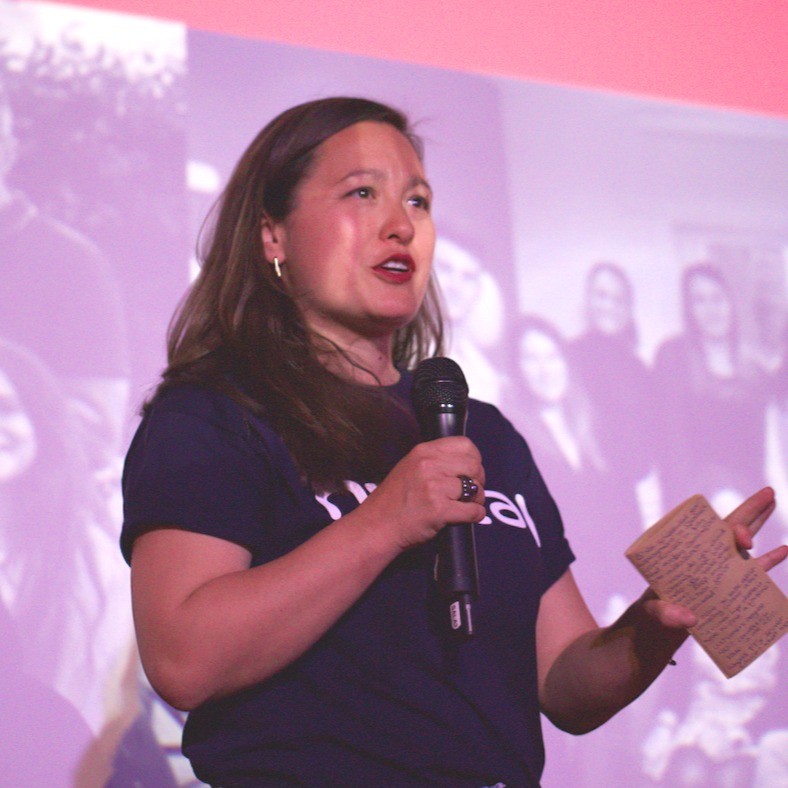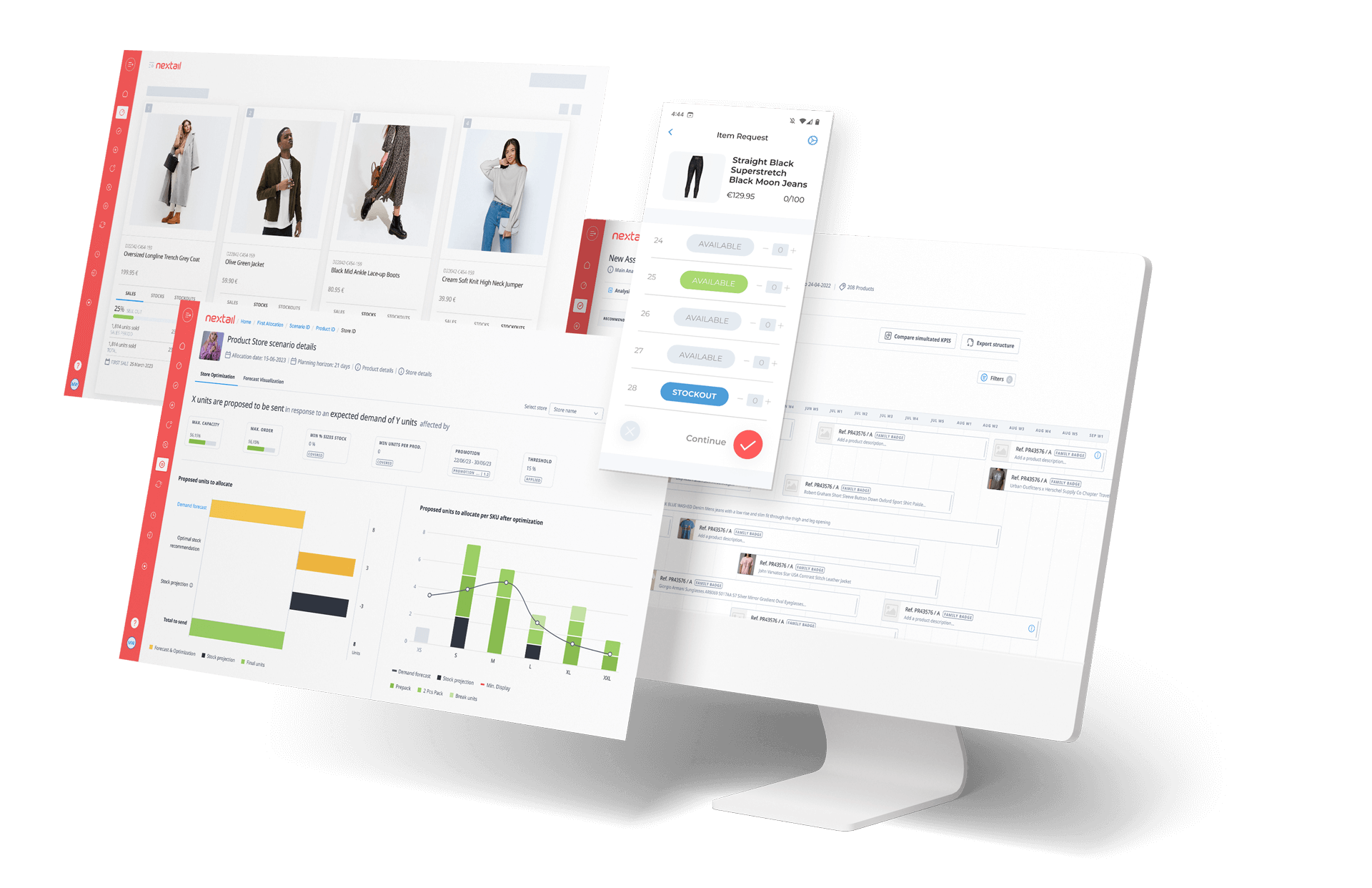Implementing AI-driven merchandising tech and living to tell the tale: Mark Scouller’s experience
Mark Scouller brings nearly two decades of experience in the world of merchandising, having held senior roles at leading UK fashion retailers including Next, Dorothy Perkins, New Look, and Mountain Warehouse, where he was Head of Trading.
Having been a key player in implementing Nextail during his time at Mountain Warehouse, he provides insight into what finally drives businesses into action, how to achieve top-to-bottom buy-in, and examples of key “aha!” moments that give teams the proof they need to understand the value of AI-driven inventory tech.
Bringing in the reinforcements: When the pain outweighs the inertia
For fashion retailers, the decision to adopt new technology like AI, is never a flippant one. When it has the potential to shift the foundations of merchandising operations, there needs to be a real turning point when pain outweighs inertia to trigger action.
Growing beyond capacity makes things messy fast
Sometimes, that moment arrives with scale. Growing networks and expanding assortments can lead to millions of branch-SKU combinations which are far too many for even the most skilled teams to manage with spreadsheets alone.
“The future of retail doesn’t fit in Excel. If your team still relies on spreadsheets that crash with half a million rows and is based on someone’s mental map of the stores, it’s time to admit there’s a problem. That’s not going to serve you well for the next 10 years.” says Mark.
“You need every store in your portfolio to be performing at its best. And unless you’ve got a branch merch team with infinite time, you’re probably missing opportunities in your mid-tier stores and with mid-sellers—the exact areas that quietly drain margin if neglected.”
At that stage, teams risk being bogged down by admin. Great merchandisers spend their days buried in massive files, manually reacting to issues instead of taking part in the exciting, cross-functional work that actually drives the business forward in shaping future strategy.
External volatility throws fuel on the fire
On top of internal complexity, external volatility such as supply chain breakdowns, and shifting global markets has only raised the stakes, forcing merchandisers to manage both the micro and the macro in real-time.
“The line between too much stock and too little is razor-thin and merchandisers are expected to be somewhat of clairvoyants. Success or failure comes down to the small decisions you make every day. Even if everything else is straightforward, getting it right all the time, across the entire year, is tough. Getting it right consistently is something else entirely.”
At some point, the pain of maintaining traditional ways of working becomes too much, and that tends to be when forward-thinking teams stop patching spreadsheets and start looking for smarter systems built to handle today’s complexity and tomorrow’s scale.
Getting teams onboard: Where resistance shows up and how to work through it
Identifying the pain and deciding to alleviate it is a great first step. But once an inventory solution like Nextail is on the table, and especially if it means a fair level of beneficial disruption, top-to-bottom buy-in is essential for moving the project forward.
Mark explains how implementation starts, both practically and emotionally for different stakeholders across an apparel business, and how it often requires a mindset shift, team communication and management.
Paint the bigger picture for senior leaders
Senior leaders may be concerned with how bringing in a new inventory system may disrupt how they’re used to getting the answers the way they’re used to about the price tag attached to the technology.
Key to getting leadership buy in, Mark points out, isn’t just about promising a sales lift or potential cost savings. It’s often about painting a bigger picture in which the business would finally be able to make better, faster decisions at scale with a technology that could cover ground a human team couldn’t without losing precision.
He said that in his experience, “We focused on the bigger picture. The value wasn’t about reducing headcount,” he explains. “It was about improving the businesses’ ability to make smart, timely decisions across all store-SKU combinations.”
What can also help seal the deal is reassurance. Leadership teams may gain confidence in seeing that more and more high-volume, high-complexity retailers are already walking this path and are thriving.
Afterall, as Mark says, “CEOs can be hesitant to be the first customer. They want to know who else is using it. Are they a similar kind of retailer? Have they had similar growth challenges? Do I know someone I can call and ask?”.
At the team level, embrace early skepticism and the “Aha!” moments will come
While some merchandisers love new tech and are excited by anything that can provide new insight or save time, others might not feel ready to switch to something unfamiliar, especially if they haven’t had much say in bringing in a new inventory solution.
Success of the new tech, however, often hinges upon adoption. “If the users don’t buy in, you’ve wasted your money because they won’t get any value out of it,” Mark says.
Speaking from his experience Mark said that in the early days after implementation of Nextail, there was a level of natural skepticism. His team combed through the daily replenishment suggestions with what he calls “a magnifying glass and a healthy dose of suspicion.”
But over time, the balance shifted. “People started to realize that the decisions being generated were solid. Instead of spending an hour and a half every morning fiddling with files, they could trust the system to just do the job, and spend that time on more valuable work.”
One memorable turning point came when Nextail suggested allocating a surprisingly large volume of a padded jacket to a Canadian store, an amount that, if done manually, might have triggered panic. But the product flew off the shelves in days. “That was a real ‘aha’ moment. The team saw that it wasn’t an error, it was just a data-driven decision that we never would have made ourselves, as it goes against everything we’ve been taught.”
It became clear that an advanced inventory system could help the team get to decisions they just didn’t have time for. Although Mark’s team found that new upper limits for best-sellers were discovered and faster sell-throughs than previously thought possible, the real added value was in optimizing mid-sellers in small stores, branch-SKU combinations you never quite get to, and the like. And while most merch teams can only review these combinations weekly, Nextail does it daily — revealing midweek stockouts and opportunities that would otherwise go unseen.
Other benefits included being able to spend more time with retail identifying range needs, or adding strategic input to ranging meetings months ahead — tasks the team simply didn’t have time for before.
And once teams gain confidence and are able to tap into otherwise hidden insights for better business, they’re able to look up, think bigger, and work more strategically. In essence, resistance is overcome and adoption is earned.
Merchandising heroes, still on the fence or don’t know where to begin?
For those senior merchandisers who feel the pain, are ready to address it, but still aren’t sure they’re ready to take on a massive transformation of their traditional ways of working, Mark offers a clear litmus test: “Ask yourself whether your current process will still be fit for purpose five or ten years from now. If not, why wait to change?”
His advice is especially pointed for retailers without dedicated branch merch teams. “If you’re relying on a central team to manage allocations across a wide store estate, you need something that can scale with you. Otherwise, you risk under-serving your quieter stores and missing your targets without even realizing why.”
And as for where to start, Mark says, “It’s not about finding the flashiest platform or something that necessarily covers you end-to-end. It’s about asking where the tech will have the most impact on the economic side of things while also freeing our best people who are currently stuck doing work a machine could do better.”
—
Technology alone won’t fix your merchandising. But as Mark’s story shows, the right tech adopted thoughtfully can free your teams from the repetitive and reactive, so they can focus on what truly moves the needle.



